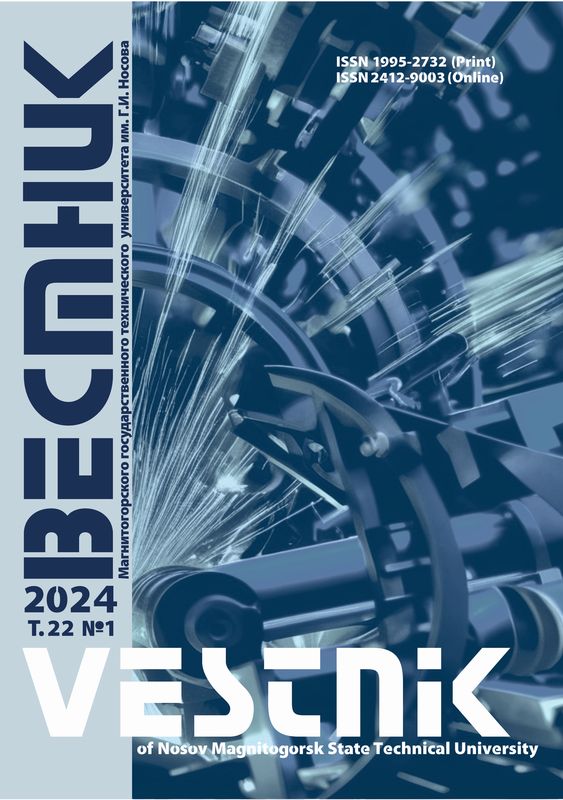Abstract
Problem Statement (Relevance): When studying the effect of magnetic field on a crystallizing melt in laboratory environment, a controllable mould provides the key unit that allows to change the temperature gradient of the cooled melt, as well as the strength of the magnetic field (constant or alternating). For quantitative analysis of such effect, one would need to do a theoretical analysis of the factors related to the magnetic field and the temperature gradient. No such analysis can be found in the available scientific literature. This paper describes a unique controllable mould designed by our laboratory and contains some theoretical background of the effect produced by pulsed magnetic field on the paramagnetic melt during crystallization. Objectives: The objective of this research was to formulate the theory of the effect produced by pulsed magnetic field on paramagnetic metal and to carry out a quantitative analysis of such effect. Methods Applied: Theoretical study conducted on the basis of Maxwell equations, as well as the Biot–Savart, Ohm and Ampère laws. Findings: The authors examined the basic mechanisms behind pulsed magnetic field and its effect on solidifying metal. The following parameters were calculated: 1) the radial component of the pressure created by magnetic field 2) the pressure acting on the ends of the crystallizing melt 3) the amount of Joule heat transferred to the melt during one magnetic pulse. It was shown that: 1) the radial magnetic pressure can be quite high and alternates during one discharge pulse time; 2) the pressure acting on the ends of the melt is non significant; 3) the Joule heat transferred to the melt by eddy currents during one discharge pulse can reach 30 J with U0=1000 V. Practical Relevance: The obtained results can be useful in the analysis of experimental data on silumin crystallization in a controllable mould under the impact of magnetic field and without it. The obtained results can also be used for the development of new methods, techniques or technologies for producing materials with predetermined physical and mechanical properties.
Keywords
Controllable mould, paramagnetic melt, aluminium, pulsed magnetic field, ponderomotive forces, transient events, Joule heat.
1. Dibrov I.A. Russian aluminium casting industry: Current status and development prospects. Liteishchik Rossii [Russian foundry man], 2007, no. 5, pp. 28-29. (In Russ.)
2. Ren-Guo Guan, Tie D. A review on grain refinement of aluminum alloys: progresses, challenges and prospects. Acta Metall. Sinica. 2017, vol. 30(5), pp. 409–432.
3. Deev V.B., Selyanin I.F., Kutsenko A.I., Belov N.A., Ponomareva K.V. Promising resource saving technology for processing melts during production of cast aluminum alloys. Metallurgist. 2015, vol. 58, no. 11-12. pp. 1123-1127.
4. Kotlyarsky F.M., Borisov G.P., Duka V.M. et al. Tempera ture-time treatment of aluminium alloys. Protsessy litiya [Casting processes], 2012, no. 3, pp. 42-52. (In Russ.)
5. Efimov V.A., Eldarkhanov A.S. Fizicheskie metody vozdeystviya na protsessy zatverdevaniya splavov [Physical effects on alloy solidification]. Moscow: Metallurgiya, 1995, 272 p. (In Russ.)
6. Zabbarov R., Bibikov A.M., Zhivoderov V.M. Structural changes in and properties of magnetic field treated aluminium alloys. Metallurgiya mashinostroeniya [Metallurgy of machine building], 2009, no. 6, pp. 25–27. (In Russ.)
7. Lovtsov D.P. Innovative processing techniques to control the casting quality. Liteishchik Rossii [Russian foundry man], 2004, no. 6, pp. 8-10. (In Russ.)
8. Propescu M., Vagra B. Microstructure of aluminum alloys solidified by rotating electric field. Mater. Mech. 2015, no. 10, pp. 44–48.
9. Zhang Y., Cheng X., Zhong H., Xu Z. , Li L., Gong Y., Miao X., Changjiang, Song C., Zhai Q. Comparative study on the grain refinement of Al-Si alloy solidified under the impact of pulsed electric current and travelling magnetic field. Metals. 2016, vol. 6, p. 170.
10. Bustos O., Ordoñez S., Colás R. Rheological and microstructural study of A356 alloy solidified under magnetic stirring. Int. J. Metalcasting. 2013, vol. 7, no. 1, pp. 29–37.
11. Wang, X., Sun, G., Wang, L., Ma Q., Cui J. A new approach for preparing SiC particle-reinforced aluminum matrix composites by applying electromagnetic field. J. Wuhan Univ. of Technology (Mater. Sci.). 2016, vol. 31, no. 4, pp. 717–721.
12. Zhang Y., Zuo T.T., Tang Z., Gao C.M., Dahmen K.A., Peter K., Lu Z.P. Effect of electromagnetic field on microstructure and properties of bulk AlCrFeNiMo0,2 high-entropy alloy. J. Mater. Eng. Perform. 2015, vol. 4, no. 11, pp. 4475–4481.
13. Vdovin K.N., Dubsky G.A., Egorova L.G. Effect of magnetic field on the crystallization of aluminum melts. Izvestiya vuzov Tsvetnaya Metallurgiya [University proceedings. Non-ferrous metallurgy], 2018, no.2, pp. 34–42. DOI: 10.17073/0021-3438-2018-2-34-42












